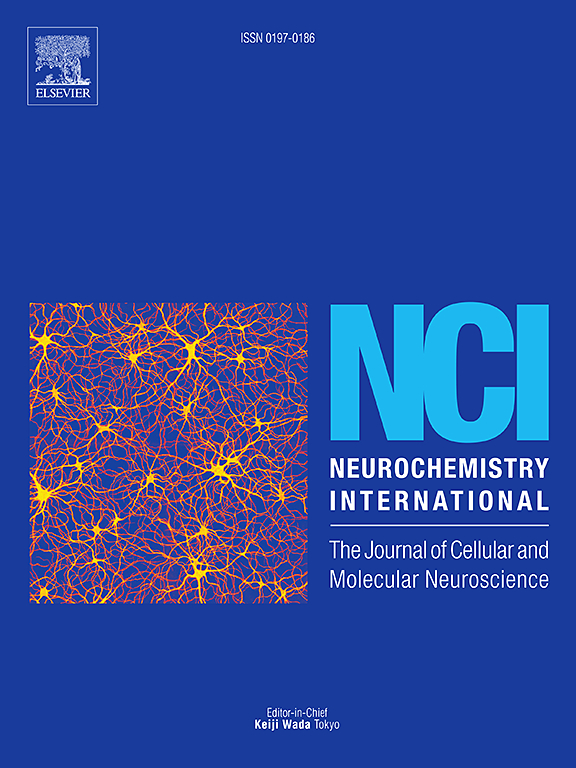Targeting ferroptosis by electroacupuncture offers a therapeutic regimen for brain injury after ischemic stroke
IF 4
3区 医学
Q2 BIOCHEMISTRY & MOLECULAR BIOLOGY
引用次数: 0
Abstract
Ischemic stroke (IS), the most prevalent form of stroke, remains a significant healthcare challenge and imposes a considerable burden on affected individuals. Ferroptosis, a form of regulated cell death (RCD) characterized by iron overload -induced lipid peroxidation, was identified as a contributor to induce cell death following brain injury after ischemic stroke. Targeting ferroptosis is a novel therapy regimen for IS. And seeking novel therapy is unmet need for IS. Electroacupuncture (EA) has been revealed to have neuroprotective effect against IS and recommended to treat IS by World Health Organization (WHO) for years, but the specific mechanism underlying EA-mediated neuroprotection is still elusive. Emerging evidences have shown that EA alleviates brain injury after ischemic stroke by inhibiting ferroptosis; however, the mechanism by which EA suppresses ferroptosis against IS has not been sufficiently clarified. In this review, we first summarizes the core molecular mechanism of ferroptosis, with an focus on interpret how ferroptosis leads to the genesis of brain injury after ischemic stroke and the novel regulation of ferroptosis during the brain injury after ischemic stroke. We then highlights our emphasize on the emerging evidences that have revealed EA inhibit ferroptosis and review their pharmacological mechanisms against brain injury after ischemic stroke. This review highlights EA as a novel therapeutic regimen for ischemic stroke by suppressing ferroptosis, synthesizing mechanistic insights into iron-dependent lipid peroxidation pathways, evaluating emerging experimental evidence of EA's neuroprotection, and proposing targeted clinical strategies to mitigate post-stroke brain injury.
电针靶向铁下垂为缺血性脑卒中后脑损伤提供了一种治疗方案
缺血性中风(IS)是最常见的中风形式,仍然是一个重大的医疗挑战,并对受影响的个人施加了相当大的负担。铁凋亡是一种以铁超载诱导的脂质过氧化为特征的调节细胞死亡(RCD)形式,被认为是缺血性卒中后脑损伤诱导细胞死亡的一个因素。靶向铁下垂是一种新的is治疗方案。而寻求新的治疗方法是is尚未满足的需求。电针(EA)对IS具有神经保护作用,多年来一直被世界卫生组织(WHO)推荐用于治疗IS,但电针介导的神经保护的具体机制尚不清楚。新证据表明,EA可通过抑制铁下垂减轻缺血性脑卒中后脑损伤;然而,EA抑制铁下垂对抗IS的机制尚未得到充分阐明。本文首先综述了铁下垂的核心分子机制,重点阐述了铁下垂如何导致缺血性脑卒中后脑损伤的发生,以及铁下垂在缺血性脑卒中后脑损伤中的新调控。然后,我们强调了我们的重点新证据表明,EA抑制铁下垂和回顾其对缺血性脑卒中后脑损伤的药理学机制。这篇综述强调了EA作为缺血性卒中的一种新的治疗方案,通过抑制铁下沉,合成铁依赖性脂质过氧化途径的机制见解,评估EA神经保护的新实验证据,并提出有针对性的临床策略来减轻脑卒中后脑损伤。
本文章由计算机程序翻译,如有差异,请以英文原文为准。
求助全文
约1分钟内获得全文
求助全文
来源期刊

Neurochemistry international
医学-神经科学
CiteScore
8.40
自引率
2.40%
发文量
128
审稿时长
37 days
期刊介绍:
Neurochemistry International is devoted to the rapid publication of outstanding original articles and timely reviews in neurochemistry. Manuscripts on a broad range of topics will be considered, including molecular and cellular neurochemistry, neuropharmacology and genetic aspects of CNS function, neuroimmunology, metabolism as well as the neurochemistry of neurological and psychiatric disorders of the CNS.
 求助内容:
求助内容: 应助结果提醒方式:
应助结果提醒方式:


